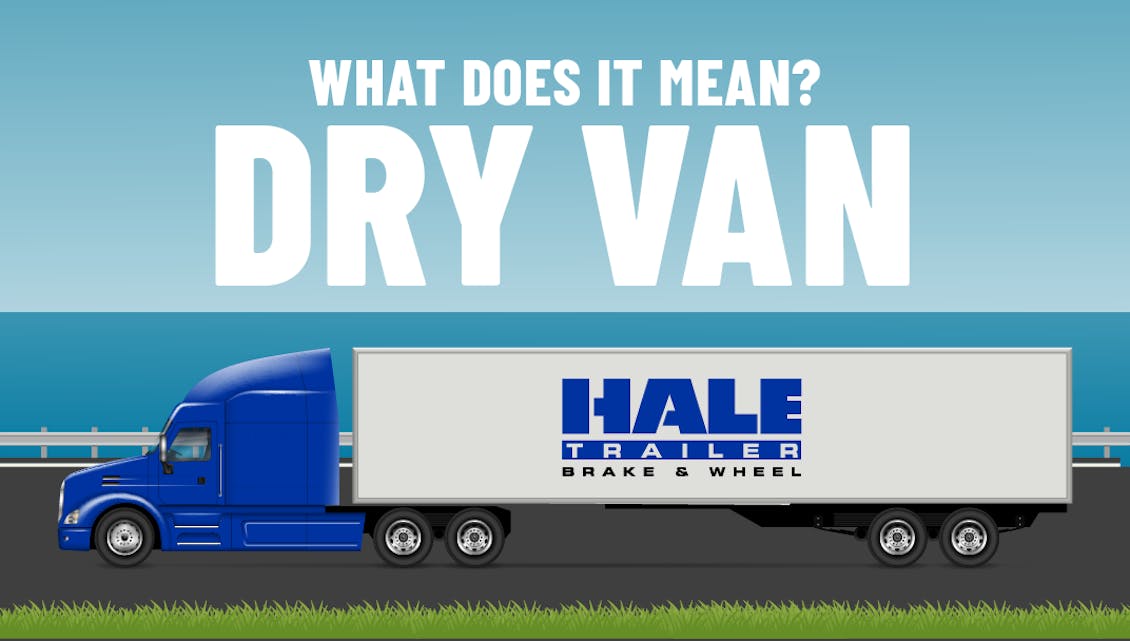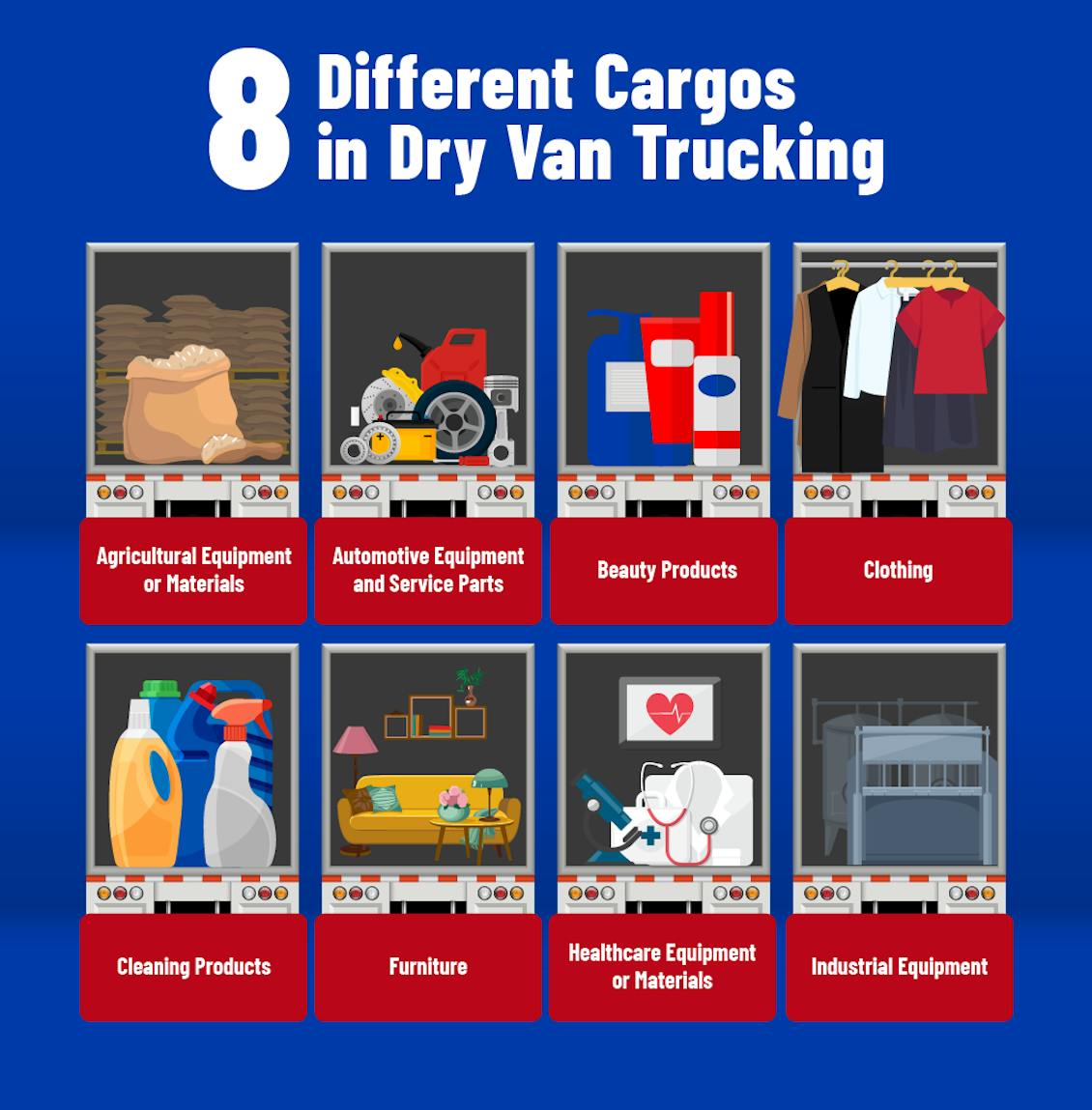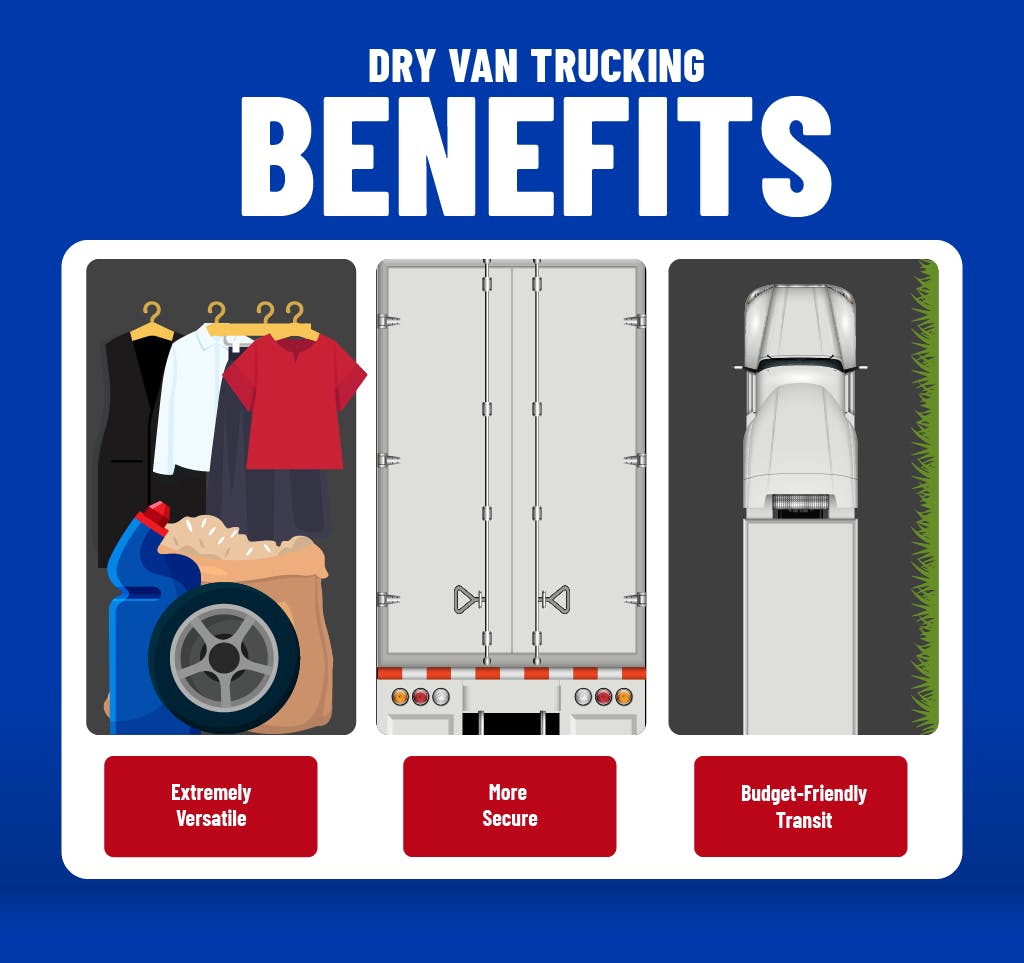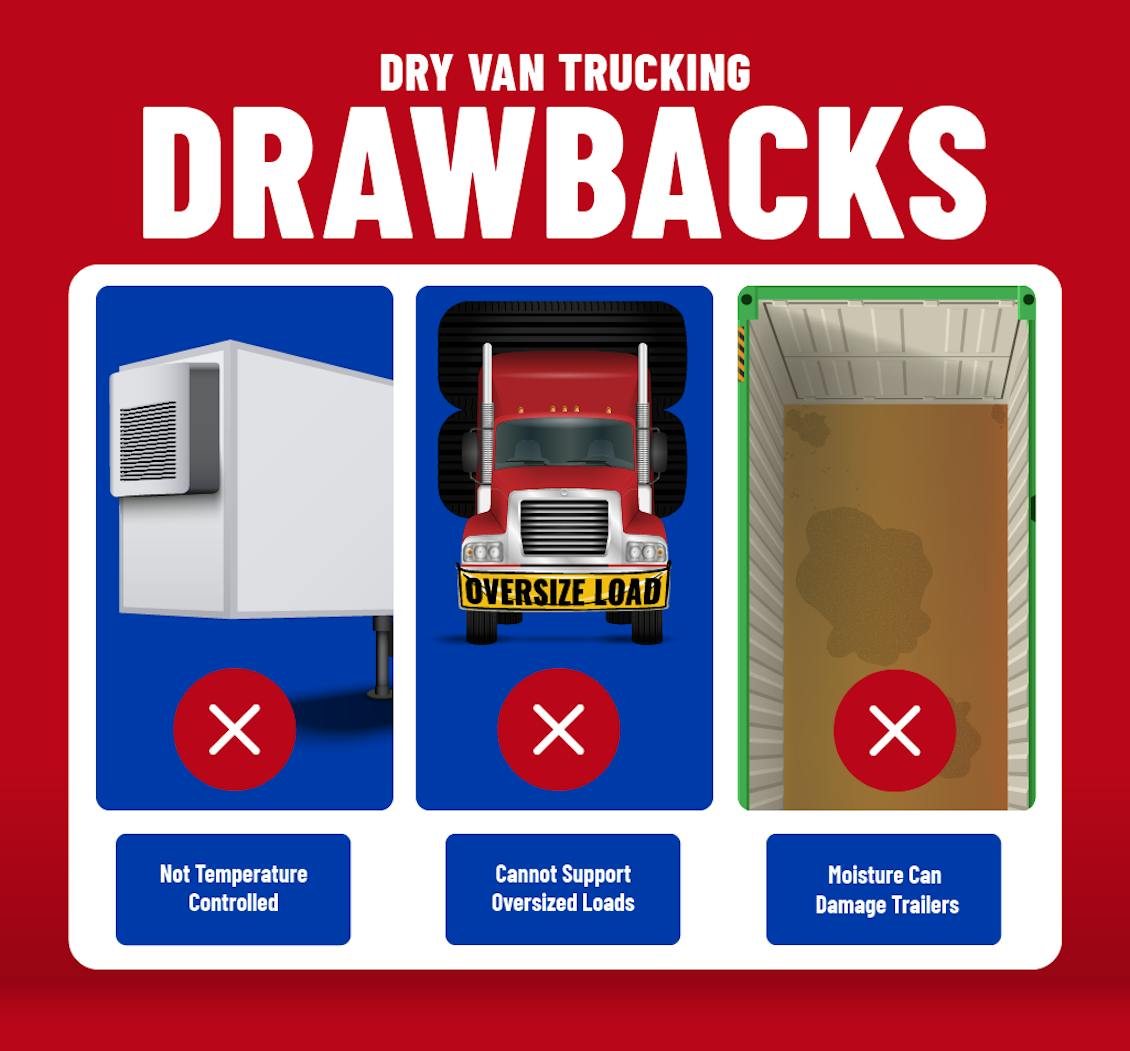Dry Van Trucking: Everything You Need to Know
March 14th, 2022

To take you on the journey of transporting freight, let’s start with knowing your options. This is the first step in transporting freight successfully. Knowing all of the key variables will help you understand your best transportation option for your needs.
The dry van trucking option is one that is highly preferred and trusted for transporting freight. It’s widely available and serves many benefits by having an enclosed trailer. With its high preference for freight transportation, there has been a noticeable demand increase for dry van freight as well.
Based on factors such as haul length, wait times, and freight availability, we’ve highlighted what does dry van mean, what is dry van trucking, and the benefits as well as drawbacks of dry van freight shipping.
Read on to find out if dry van trucking is the best method for you.
What Does Dry Van Mean?

The term “dry van” is in reference to the vehicle used to haul cargo you typically see on the highway. It has a large storage container being towed which is not temperature controlled. As a result, non-perishable items are typically shipped with this method.
Being fully enclosed, a dry van can protect shipments from outside elements. The versatility of freight can come palletized, boxed, or even as loose freight. It’s safe to say that many of the items you get were probably shipped or received as goods that traveled by dry van.
What is Dry Van Freight?
Dry van freight can be easily explained as non-perishable items. Shipping freight via dry vans is good for a lot of industries with shipping needs. It’s a method that is typically less expensive than others because the items don’t require temperature-controlled trailers. Additionally, they can even hold around 45,000 pounds of goods in larger containers. For example, the following are items that can potentially be hauled by way of dry van trucking:
- Agricultural equipment or materials
- Automotive parts and service products
- Beauty products
- Cleaning products
- Clothing
- Furniture
- Healthcare instruments and equipment
- Industrial equipment

Companies rely on dry van trucking to keep their supply chain moving for a variety of reasons, including efficiency and cost. However, not all goods can be shipped in this manner.
What is a Dry Van Driver?
A dry van driver is the one responsible for picking up, transporting, and delivering scheduled items in a dry van truck. Dry van drivers are hired to drive distances across borders, regionally, or from city to city. They are accountable for handling the safety of their shipments, keeping track of their delivery status, and ensuring that goods are delivered on time.
The average dry van driver can make anywhere between $57,000 to $76,500 depending on the area and hours they’re driving. Due to high demand, dry van trucker jobs have become one of the most common modes of freight transportation in the world.
The Benefits of Dry Van Trucking

Almost every industry that produces or ships non-perishable items uses dry van shipping. Let’s dive into three advantages of using dry van shipping:
- The dry van trailer is extremely versatile, making for a wide variety of freight to be transported. This method can allow for building materials, medical equipment, and more to be passed along.
- By being enclosed, the dry van trailer allows the shipper and driver to feel more confident in the security of the freight. It is protected from outside elements like extreme weather conditions, theft, and can be secured with additional bracing.
- Depending on the trailer size of your choice, you can have an even more budget-friendly transit. Being the most affordable shipping method compared to other options makes for great accommodations to long-haul and short-haul shipments alike.
The Drawbacks of Dry Van Trucking

With dry van shipping, there are some downsides apart of the process.
- Dry vans are not temperature controlled like refrigerated unit trucks. Even though they can ship a variety of goods for an affordable price, there is this limitation.
- Dry vans cannot support wide loads or oversized shipments like flatbed trailers. This is another limitation to the freight option causing a shipper to seek a different method and potentially expand their budget.
- Most dry van trailers are vulnerable to moisture damage causing a need to repair or replace the impacted flooring. With hardwood floors being in most trailers, the buildup of condensation from freight or open doors are a constant threat.
Dry Van Trucking vs Refrigerated Shipping
Refrigerated trailers, most known as reefer trailers, are always a safe option for goods that need climate controls. However, they are not always necessary which is why dry van shipping serves is the more common choice. Additionally, refrigerated shipping takes more time to load and unload a shipment in comparison to the easy “drop and hook” load mode on dry van trucks.
The other responsibilities that come with refrigerated trucks are also cleaning the trailer after every load along with other additional driver responsibilities. Should the driver have complications with a truck, a breakdown can sometimes result in unavoidable damage to the freight.
Dry vans are more readily available while being the most cost-effective of the two options. A dry van can also allow for different sizes of cargo while being less expensive to keep running, unlike a refrigerated truck. While the air conditioning and insulation can serve specialty goods, they cannot haul as much cargo in comparison to the affordability a dry van can offer for non-perishable goods.
Is Dry Van Shipping Right for My Fleet?
If items are not temperature sensitive, why spend extra money with refrigerated shipping? It doesn’t take a high-power motor running or a longer wait time in the shipping loading and unloading process. Review the items and commodities you need shipped and consider dry shipping as your transportation method. You will save money and can send a variety of items in an enclosed trailer.
Frequently Asked Questions
How Much Can a Dry Van Haul?
A dry van can haul about 45,000 pounds of cargo. However, the size and weight of the cargo will ultimately determine if the items can be transported.
What Are Average Dry Van Rates?
According to DAT, dry van rates were averaging $2.45/mile in Dec. 2022. The average dry van rates can vary depending on a number of factors, including location, demand, and fuel prices.
How Many Pallets Fit in a Dry Van?
A standard 53-foot trailer can fit anywhere from 26 to 30 pallets. Depending on the size of the pallets and the pattern you pack the trailer will determine the number of pallets that can fit in the container.
Dry Van Trailers for Sale & Rent
Catch our dry van trailer lineup in motion, which is now available for purchase or rental. Whether you’re shipping an entire trailer or a few pallets, Hale Trailer has dry van equipment at the capacity you need. Browse our online inventory or visit one of our locations to learn more about how we can help you.
All the information on this website – https://www.haletrailer.com – is published in good faith and for general information purposes only. Hale Trailer Brake and Wheel does not make any warranties about the completeness, reliability and accuracy of this information. Any action you take upon the information you find on this website, is strictly at your own risk. Hale Trailer Brake and Wheel will not be liable for any losses and/or damages in connection with the use of our website.
